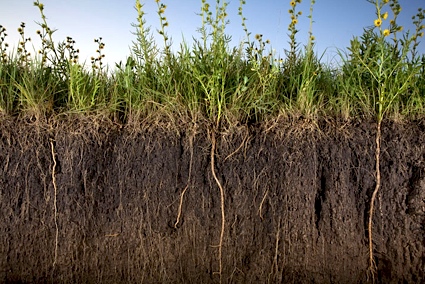(Written by Daniel Schlupp)
What would MacGyver do with a wire hanger, 15” of 10-gauge high tensile wire, and 11cm of 6” PVC pipe? If he was following the Northern Rivers Soil Health Card, then he’d be testing his garden’s soil for the qualitative indicators associated with a healthy, properly functioning soil (a “supra-organism” to quote Jerry Brunetti in The Farm as Ecosystem).
The Northern Rivers Soil Health Card is a collection of mostly simple qualitative tests that measure ground-cover density, soil life diversity, compaction, infiltration, root development, soil structure, the A-1 horizon, earthworms, pH, and leaf color. I’ve been using this soil health card as an experimental tool in the Residential garden at Kusamala in order to gain a better understanding of the garden’s soil and how my interactions with it affect its function (note that the only test for the health card I couldn’t perform was pH due to lack of a test strip). As a result, I can better determine how past agricultural practices have influenced the soil. For example, the beds that I sheet mulched way back in December have the fastest drainage, the most diversity in soil life, excellent root penetration and the most stable soil aggregates. In contrast, the beds that were tilled using a khasu to incorporate compost, have much slower water infiltration, less aggregate stability, less root penetration, and less soil life diversity.
The tests provide the best results when the area is actively being used. Dry soils aren’t the best indicators of soil life diversity because of lack of moisture, so I tested the garden beds that are currently being used. The directions for the tests recommend not performing them too soon after tilling but I tried it anyway. Water infiltration was drastically reduced in these beds. Extrapolating these results to the fields around Malawi that are tilled during the dry season and not mulched, you can imagine the erosion and water loss that will occur when the first rains hit the soil in a few months.
I’ve been experimenting with these tests because I’m looking for a more engaging way to understand my soil. Relying on a lab to process the chemical properties of the farm’s various soils doesn’t help me understand the other legs of the soil pyramid – physical and biological – and what I practice in these beds has a direct influence on all three. These tests are also perfectly scalable to show local farmers: they are relatively simple to perform and don’t require much time, unless, like me, you find your self pouring over each test looking for clues about how much glomalin, mucilage, and polysaccharides are being produced by our employees of the microbial kind. Finally, as the Water Manager, managing rainwater as a free resource for agriculture means managing the soil in order to facilitate maximum infiltration. You can’t manage water without considering soil, air, and the rhizospehere. They work as a system.
You can find more information on the Northern Rivers Soil Health Card along with some interesting videos at the Soil Care Inc. website.



